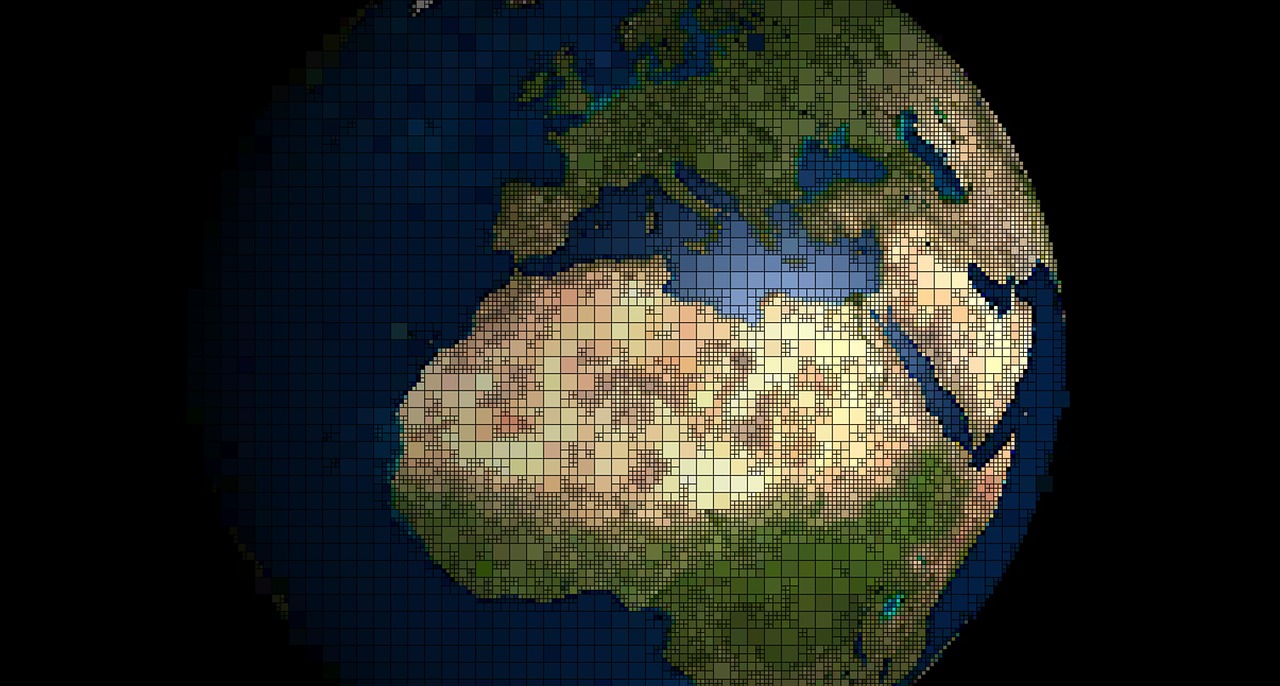
Intro
Geographical Information Systems (gis) are now employed in many applied sciences and are a widely used tool in all disciplines dealing with the earth’s surface and human activities.
G.I.S. a tool to make you fly like a bird or dig like a mole
In the past two decades, the analysis of space and location of phenomena has also become a key component in social and economic research.
In the social and tourism sciences, maps have only recently been considered an analytical tool, the motivation was basically related to the difficulty of evaluating them as an effective and efficient tool. Today, digital geographic bases are becoming a critical support for data analysis and management. This development is yes due to the significant increase in technology that information technology has had in the last decade, but mainly due to the increased use of GIS systems.
Attention to position, interaction, structure and spatial proems can play a central research role in many social science disciplines. Empirical studies in these fields standardly employ data for which positional attributes (where) are important sources of information. Such types of data typically consist of one or more observations referring either to, units such as, for example, households or manufacturing settlements, or to aggregate spatial units such as electoral districts, regions and even nations. Observations such as these for which absolute position and/or relative position are taken into account are called spatial data. In the social sciences, they have been used in a wide variety of studies such as anthropological research on social relations. Demographic analysis or geographic trends in mortality and fertility, and political patterns of spatial structures in international conflicts and international cooperation. In addition, in urban economies and regional science in general, , spatially referenced data are basic and are studied to model the spatial structure of sets of socio-economic variables such as unemployment rates, household consumption and prices for consumer goods.
The most important feature that distinguishes gis from other information systems is the ability to handle spatial data since they are sensitive to the scales at which they are surveyed and represented and the way they are measured. A city is only a point on a world map, but the same city occupies an entire map sheet when, for example, all its roads or the rail lines and rivers that run through it are displayed in detail. A phenome, represented by a thin line on a continental-scale map, can become an areal phenomenon when it is represented at a large scale. The ability to handle geographic objects at different scales has made gis almost indispensable tools for many fields of research and applications.
Another feature that makes spatial data unique is that the location information turns out to be intrinsic to the observations themselves, i.e., the location of geographic elements can be considered in their own right and analyzed: gis therefore turn out to be the fundamental tools for performing this kind of data operations.
Generally, most users employ gis almost exclusively for cartographic purposes or at most to perform some basic spatial analysis operations, such as buffering and overlaying, on the thematic information layers available to them that are supported by almost all commercially available gis. But gis are not only useful for visualizing data; in fact, they are even more useful when they are employed to analyze them. By changing the definition of the gis from a system for managing spatial information to a decision support system, the gis provides the tools to perform spatial queries, dynamic mapping, geocoding, and even simulation of alternative scenarios of the region’s future development.
In recent years, the demand for integrating statistical analysis with gis so that geographic data can be processed, analyzed, and visualized in the same work environment has increased dramatically. The type of integration that is most appropriate for each statistical technique should tend to maximize the potential gain from ‘using the specific functions of gis. Indeed, there would be no convenience in integrating a particular structural map study technique without being able to interpret its spatial relationships.


Data types for socioeconomic analysis with Geographic Information Systems
The world is complex and dynamic, so it is often necessary to represent the reality in which we live with a model
Models are built to reduce the complexity of phenomena so that they can be managed and analyzed, and to build a static version of nature so that its problems can be brought into better focus. In short, simplified models consisting of objects placed on the earth’s surface are used to represent the real world. Different types of objects are used to represent the complex world, and relationships between objects are defined to simulate the dynamism of the system.
A map is an example of how the real world can be modeled. Different symbols can be used to represent objects: points and polygons can indicate locations of interest at different scales, lines can be used to depict waterways, roads or any other object that in nature makes a connection. However, other information is needed to add meaning to these symbols: lines are just lines and points are just points if there is no other information describing their properties and characteristics.
The conventional approach to geographic information management considers the spatial data structure to consist of a map part describing the location, shape or other spatial characteristics of the object, and a data part in table form (“attribute” table) describing the other characteristics of the object
One of the advantages that characterizes GIS is that it brings real-world data back into an organized framework that enables numerical and statistical processing; in addition, cas enable advanced logical hypotheses to be built to fine-tune predictive models and scenarios. This important step, which combines processing with interpretation of the data at hand, is the bridge to understanding the data from both a statistical and geographic perspective.


Tourism and Science of Travel
Beauty has its own rules, and they must be discovered
Geographic information systems, due to their specific internal architecture for organizing data, realize a methodology for integrated analysis of data having a spatial component.
Gis, precisely because of their multidisciplinary design, have general functionalities that can be adapted to various types of studies, and that is why they can often be considered as the toolbox to build the most appropriate analysis procedure; in other words, one can modulate the capabilities of the gis to prepare and synthesize data that then, depending on the study, must be processed with specific tools. This hybrid solution of creating interfaces that can use both gis and specific statistical tools is even more interesting, and will be a topic to be integrated later.
There are two levels of statistical analysis for data contained in a gis. The first consists of the usual statistical description of the data: values, intensities, relationships between distinct elements are analyzed, as well as class distribution, centrality as mean, variance, standard deviation, and all the other “classical” tools used in statistical analysis. The second level, on the other hand, concerns spatial analysis in the proper sense, and that is, “weights” reflecting absolute (meters, kilometers) and/or relative (time-cost) distance are added to the computational tools, or georeferenced information is added. One of the most interesting possibilities offered by a gis database is to be able to first compute statistics and then perform spatial analysis on those results.
The added value of gis given to spatial analysis is in increasing both the quality of the input data and the ability to analyze the results. These benefits can be summarized in the availability of flexible geographic visualization of both the initial and processed data, the provision of spatial functions for data correction, transformation, aggregation and selection, and the ease of access to spatial relationships among the various objects in the study area.
In soldoni, come può il Turismo sfruttare queste tecnologie usate in altri campi ed applicazioni. La risposta potrebbe essere: la Fantasia è il limite sia superiore che inferiore. I dati ricostruiscono situazioni e creano altre informazioni che, magari, potrebbero anche raccontare un territorio dove ci sono fenomeni che la tradizione ha radicato e che nessuna fonte scritta ha riportato con la semplicità e catalogazione dovuta ad un "uso turistico". Ci saranno linee guida ed altri post collegati, proprio per questo, al metodo scientifico con cui A.I.LoveTourism con un metodo di studio scientifico proprietario crea pacchetti e storie turistiche tramite Data Science: l'Enrivonmental Data Mining Seguici sul blog :-)
www.ailovetourism.com
CONTACT US
info@ailovetourism.com
via Ammiraglio Millo, 9
Alberobello ( Puglia – Italy)
+39 339 5856822





























